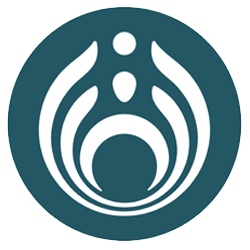Ignore Psychosocial-WHS at Your own Risk
In today’s evolving workplace, protecting mental wellbeing is no longer optional – it’s essential.
While many organisations have matured in managing physical hazards, there’s a growing demand to identify and manage psychosocial hazards – workplace factors that can affect employees’ mental health and wellbeing. From excessive workloads to poor leadership, these unseen hazards can have lasting impacts on individuals and whole teams.
In our work with organisation’s across Australia, we’ve seen first-hand how failing to manage psychosocial risks leads to reduced performance, rising stress claims, and deepening disengagement. Conversely, organisations that proactively address psychosocial risks build more resilient, high-performing, and connected cultures.
Why It Pays to Identify Psychosocial Hazards
Under Australia’s model WHS laws, all employers (or PCBUs) are legally obligated to manage psychosocial risks in their workplace. But beyond compliance, there’s a strong ethical, social, and financial case for taking this responsibility seriously:
⚡ Legal compliance: The updated WHS Code of Practice in most states now clearly includes psychosocial hazards as risks that must be assessed and controlled. Failure to act can result in penalties and reputational harm.
❤ Duty of care: Everyone deserves a workplace where they feel respected, supported, and safe from psychological harm.
💸 Cost of inaction: Psychosocial hazards are linked to increased absenteeism, presenteeism, compensation claims, turnover, and lower productivity. Deloitte Access Economics estimated poor mental health at work costs Australian businesses over $39 billion annually.
What Are Some Examples of Psychosocial Hazards?
Psychosocial hazards may include:
😓 Excessive workload or unrealistic deadlines
🤬 Lack of role clarity or autonomy
🚫 Bullying, harassment, or workplace conflict
🤔 Poor support from managers or colleagues
🏛️ Organisational change and job insecurity
These factors can trigger or exacerbate stress, anxiety, depression, and burnout. Learn everything you need to know as a Queensland-based organisation.
How Do You Identify Psychosocial Hazards?
Taking a systematic and consultative approach is key. Here are six proven methods to help you gain a clear picture of psychosocial risk in your workplace:
📊 1. Surveys and Questionnaires
Anonymous staff surveys allow you to collect insights on workload, relationships, satisfaction, and stress levels. These tools provide measurable data and help track improvements over time.
💬 2. Focus Groups and Interviews
Small group discussions or one-on-one interviews give your team a safe space to share practical experiences and surface issues that surveys may miss.
🛍️ 3. Workplace Observations
Train leaders to observe signs of distress or dysfunction, such as constant overtime, communication breakdowns, or avoidance behaviours. Observations should be discreet and sensitive.
📆 4. Absenteeism and Turnover Analysis
Frequent sick leave or resignations can be a red flag. Analyse these trends to uncover hotspots of stress, dissatisfaction, or unresolved conflict.
📊 5. Review Incident and Health Reports
Tracking stress claims, mental health-related incidents, and EAP data can reveal emerging patterns.
🧬 6. Consult with WHS or Mental Health Experts
Partnering with trained professionals can accelerate your progress. Our team at Get Mentally Fit helps identify root causes, design assessments, and provide effective strategies to manage risks and support recovery.
By employing a combination of these methods, your organization will gain a comprehensive understanding of who is exposed to what psychosocial risks in your workplace. Then you can reliably develop targeted interventions to mitigate these risks.
Note: The same risk management processes used for physical health and safety may be applied to psychosocial health and wellbeing.
Build a Stronger, Safer Workplace
As you can see, once you’ve identified your risks, you can take targeted action to reduce them. This might involve role redesign, leadership training, setting clearer boundaries around workloads, or improving team culture through better communication.
Importantly, you’ll be applying the same risk management process that you would for physical hazards: identify, assess, control, and review.
Ready to Take Action on Psychosocial Hazards?
Whether you’re just starting your journey or refining your existing psychosocial risk framework, we’re here to help. At Get Mentally Fit, we specialise in:
Leadership development and mental health literacy
Tailored strategy and compliance support
📢 Protect your people, meet your legal obligations, and build a better workplace.
Get in Touch today to discuss how we can help you take proactive steps to safeguard mental wellbeing and enhance performance in your organisation.
Wishing you every success in creating a workplace where everyone can thrive — The Get Mentally Fit Team
📚 Related Articles
Explore more expert insights to strengthen your organisation’s approach to psychosocial safety:
📊 How to Assess Psychosocial Risks: A Practical SME Guide
A step-by-step approach to help small to medium businesses identify and manage psychosocial hazards effectively.
🛠️Controlling Psychosocial Risks: A guide for any organisation – Discover practical strategies to control and mitigate psychosocial risks, no matter your industry or size.


